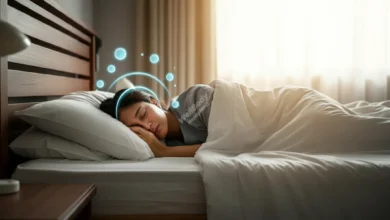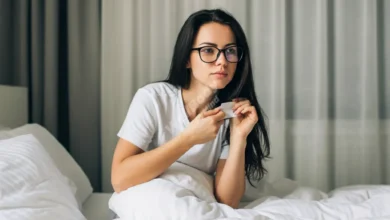Is There an Ideal Time to Go to Bed for Optimal Sleep Cycles?

Introduction: The Quest for the Perfect Bedtime
Have you ever wondered if there’s a magic hour to hit the hay for the best sleep possible? You’re not alone! Many of us are on a quest to find that ideal bedtime that leaves us feeling refreshed and energized in the morning.
In this article, we’ll dive into the fascinating world of sleep cycles and explore whether there’s truly an optimal time to go to bed. We’ll uncover the secrets of how your body’s internal clock works and provide practical tips to help you find your perfect sleep schedule.
Get ready to discover how timing your sleep just right could be the key to unlocking better rest and brighter mornings!
Understanding Sleep Cycles: The Building Blocks of Rest
Before we can pinpoint the best time to sleep, let’s break down what happens when you close your eyes at night. Sleep cycles are the foundation of a good night’s rest.
What are sleep cycles?
Sleep cycles are the repeating patterns of brain activity that occur while you’re sleeping. Each cycle typically lasts about 90 minutes and consists of different stages:
- Non-REM (NREM) sleep: This includes three stages, ranging from light sleep to deep sleep.
- REM (Rapid Eye Movement) sleep: This is when most dreaming occurs and is crucial for memory consolidation and learning.
Throughout the night, your body goes through several of these cycles. Ideally, you want to wake up at the end of a cycle, not in the middle of one. This is why sometimes you might feel groggy even after sleeping for a long time – you’ve likely woken up during a deep sleep stage.
Why are complete sleep cycles important?
Completing full sleep cycles is essential for:
- Physical restoration: Your body repairs tissues and boosts immune function during deep sleep stages.
- Mental rejuvenation: REM sleep plays a vital role in memory, learning, and emotional processing.
- Feeling refreshed: Waking at the end of a cycle can help you feel more alert and ready to start your day.
Understanding these cycles is the first step in finding your optimal sleep timing. In the next section, we’ll explore the factors that influence when and how well you sleep.
Factors Affecting Sleep Cycles: It’s Not Just About Bedtime
While finding the ideal bedtime is important, several factors influence your sleep cycles and overall sleep quality. Let’s explore these key elements:
1. Circadian Rhythm: Your Body’s Internal Clock
Your circadian rhythm is like a 24-hour internal clock that regulates various bodily functions, including sleep-wake cycles. This natural rhythm is influenced by:
- Light exposure: Sunlight is the most powerful regulator of your circadian rhythm.
- Hormones: Melatonin, often called the “sleep hormone,” rises in the evening and falls in the morning.
Understanding your circadian rhythm can help you align your sleep timing with your body’s natural tendencies.
2. Age: Changing Sleep Needs Over Time
Sleep needs vary with age:
- Newborns: 14-17 hours
- Teenagers: 8-10 hours
- Adults: 7-9 hours
- Older adults: 7-8 hours
As we age, our sleep patterns and ideal bedtimes may shift.
3. Individual Differences: One Size Doesn’t Fit All
Everyone’s sleep needs are unique. Factors that contribute to these differences include:
- Genetics: Some people naturally need more or less sleep.
- Lifestyle: Work schedules, social commitments, and daily routines affect sleep patterns.
- Health conditions: Certain medical issues can impact sleep quality and duration.
4. Environmental Factors: Setting the Stage for Sleep
Your sleep environment plays a crucial role in maintaining healthy sleep cycles:
- Temperature: A cool room (around 65°F or 18°C) is generally best for sleep.
- Noise levels: A quiet environment promotes better sleep.
- Light: Darkness stimulates melatonin production, signaling your body it’s time to sleep.
Understanding these factors is crucial in determining your optimal sleep timing. In the next section, we’ll delve into the concept of sleep timing and how to find your ideal bedtime.
The Concept of Sleep Timing: Are You an Early Bird or a Night Owl?
When it comes to sleep timing, not everyone’s internal clock ticks the same way. Let’s explore the fascinating world of chronotypes and how they affect your ideal bedtime.
Understanding Chronotypes
Chronotypes refer to your body’s natural preference for sleeping and waking at certain times. The two main types are:
Early birds (Larks):
- Prefer to wake up early and go to bed early
- Most alert in the morning
- May struggle with evening activities
Night owls:
- Prefer to stay up late and wake up later
- Most alert in the evening
- May find early mornings challenging
It’s important to note that most people fall somewhere between these two extremes.
How Chronotypes Affect Ideal Bedtimes
Your chronotype can significantly influence your optimal sleep cycles:
- Early birds might find their ideal bedtime between 8 PM and 10 PM
- Night owls might naturally feel sleepy between 11 PM and 1 AM
Understanding your chronotype can help you work with your body’s natural rhythms rather than against them.
Sleep Phase Disorders: When Timing Goes Awry
Sometimes, a person’s sleep timing can be severely misaligned with societal norms, leading to sleep phase disorders:
- Delayed Sleep Phase Disorder: Common in night owls, where sleep onset and wake times are significantly later than desired
- Advanced Sleep Phase Disorder: More common in older adults, where sleep onset and wake times are much earlier than desired
If you suspect you have a sleep phase disorder, it’s essential to consult with a healthcare professional.
Determining Your Ideal Bedtime: A Personalized Approach
Now that we understand the factors influencing sleep, let’s explore how to find your ideal bedtime for optimal sleep cycles.
The Sleep Cycle Calculator
To determine your ideal bedtime, follow these steps:
- Decide on your desired wake-up time
- Count backwards in 90-minute increments (the average length of a sleep cycle)
- Allow an extra 15 minutes to fall asleep
For example, if you need to wake up at 7 AM:
- 7 AM – 90 minutes (1 cycle) = 5:30 AM
- 5:30 AM – 90 minutes (2 cycles) = 4 AM
- 4 AM – 90 minutes (3 cycles) = 2:30 AM
- 2:30 AM – 90 minutes (4 cycles) = 1 AM
- 1 AM – 90 minutes (5 cycles) = 11:30 PM
Adding 15 minutes to fall asleep, your ideal bedtime would be around 11:15 PM for five full sleep cycles.
Considering Personal Sleep Needs
Remember, adults generally need 7-9 hours of sleep. Adjust the number of cycles based on your personal needs and how you feel after waking up.
The Importance of Consistency
Maintaining a consistent sleep schedule is crucial for optimal sleep cycles. Try to go to bed and wake up at the same time every day, even on weekends.
In the next section, we’ll provide practical tips to help you find and stick to your ideal bedtime.
Tips for Finding Your Optimal Bedtime
Discovering your ideal bedtime for optimal sleep cycles is a process of experimentation and self-awareness. Here are some practical tips to help you on your journey:
Keep a Sleep Diary
- Track your bedtime, wake time, and how you feel each day
- Note factors that might affect your sleep (e.g., caffeine, exercise, stress)
- Look for patterns over 2-3 weeks
Experiment with Different Bedtimes
- Try going to bed 15 minutes earlier or later each week
- Pay attention to how you feel upon waking and throughout the day
Listen to Your Body’s Natural Sleepiness Cues
- Yawning, heavy eyelids, and decreased alertness are signs it’s time for bed
- Don’t ignore these signals by pushing through with stimulating activities
Adjust Gradually
- If you need to shift your bedtime, do so in 15-minute increments
- Allow your body time to adapt to each change before making further adjustments
Creating a Sleep-Friendly Environment
Your sleep environment plays a crucial role in maintaining healthy sleep cycles. Here are some tips for optimizing your sleep space:
- Darkness: Use blackout curtains or an eye mask to block out light
- Temperature: Keep your bedroom cool, ideally around 65°F (18°C)
- Noise Control: Use earplugs or a white noise machine if needed
- Comfortable Bedding: Invest in a supportive mattress and pillows
- Relaxing Atmosphere: Use calming scents like lavender to promote relaxation
Technology and Sleep Timing
While technology can be helpful, it’s important to use it wisely:
- Sleep Tracking Apps: Can provide insights into your sleep patterns
- Smart Alarm Clocks: Some can wake you at the optimal point in your sleep cycle
- Blue Light Exposure: Limit screen time before bed or use blue light filters
Caution: Avoid becoming overly reliant on technology for sleep. Listen to your body’s natural rhythms as well.
When to Seek Professional Help
If you’re consistently struggling with sleep despite your best efforts, it might be time to consult a healthcare professional. Signs that you may need help include:
- Chronic difficulty falling asleep or staying asleep
- Persistent daytime fatigue
- Loud snoring or gasping during sleep
- Feeling unrefreshed even after a full night’s sleep
A sleep specialist can conduct a sleep study to diagnose any underlying sleep disorders and provide tailored treatment options.
Conclusion: Your Path to Better Sleep
Finding your ideal bedtime for optimal sleep cycles is a personal journey. Remember:
- Everyone’s sleep needs are different
- Consistency is key in maintaining healthy sleep patterns
- Your ideal bedtime may change over time, so stay attuned to your body’s needs
By understanding your sleep cycles, recognizing your chronotype, and implementing good sleep hygiene practices, you can significantly improve your sleep quality and overall well-being.
Take action today: Start by keeping a sleep diary and experimenting with different bedtimes. Your journey to better sleep and brighter mornings begins now!
Sweet dreams, and here’s to waking up refreshed and ready to tackle each new day!



